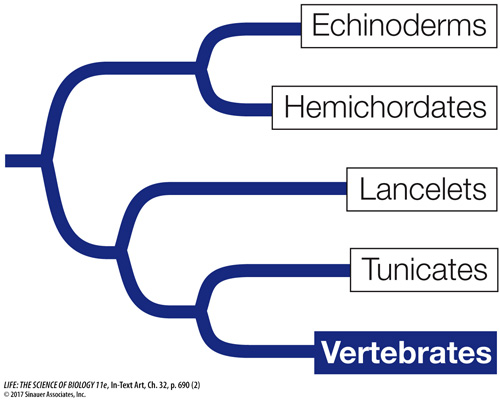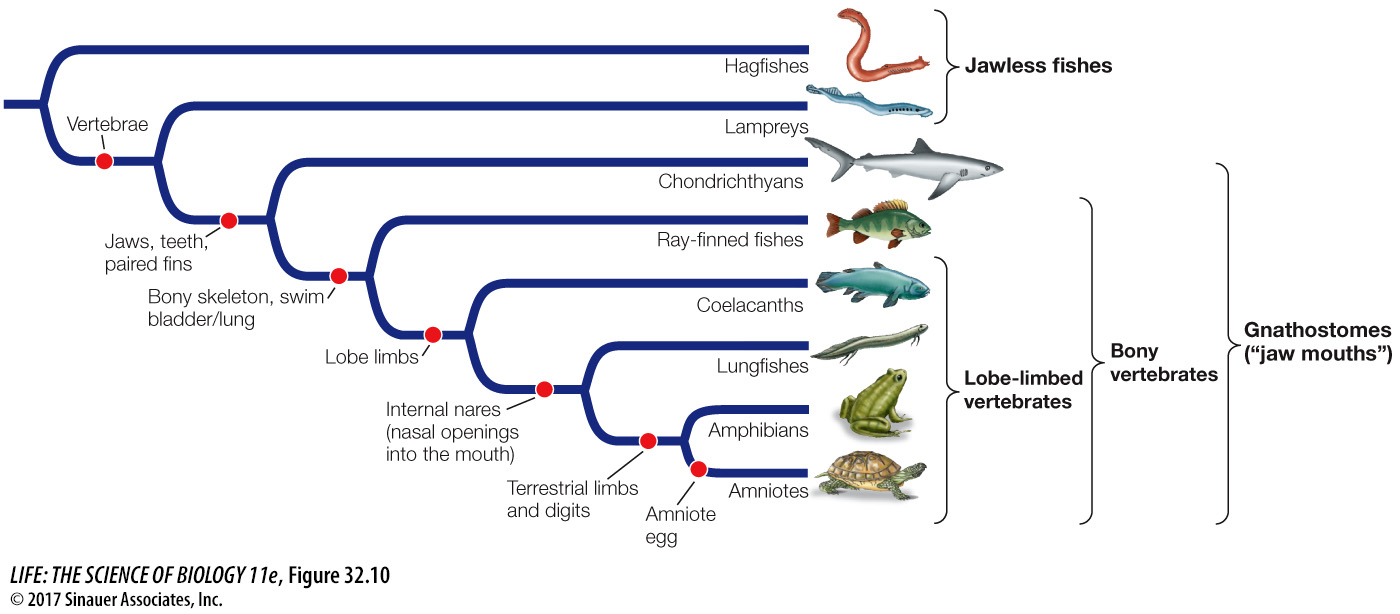A dorsal supporting structure replaces the notochord in vertebrates

In one chordate group, the vertebrates, a new dorsal supporting structure evolved. This group takes its name from the jointed, dorsal vertebral column that typically replaces the notochord during early development as the primary supporting structure. The individual elements in the vertebral column are called vertebrae. Four other key features characterize the vertebrates as well (Figure 32.9):
691
An anterior skull enclosing a large brain
A rigid internal skeleton supported by the vertebral column
Internal organs suspended in a coelom
A well-
developed circulatory system, driven by contractions of a ventral heart

These structural features can support large, active animals. The internal skeleton provides support for an extensive muscular system, which receives oxygen from the circulatory system and is controlled by the central nervous system. The evolution of these features allowed many vertebrates to become large, active predators, which in turn allowed the vertebrates to diversify widely (Figure 32.10).

All of the nonvertebrate deuterostomes live in marine environments. The lineage that led to the vertebrates is also thought to have evolved in the oceans, although probably in an estuarine environment (where fresh water meets salt water). The first vertebrates appeared in the Cambrian; since then they have radiated into marine, freshwater, terrestrial, and aerial environments worldwide. There are about 65,000 species of living vertebrates.